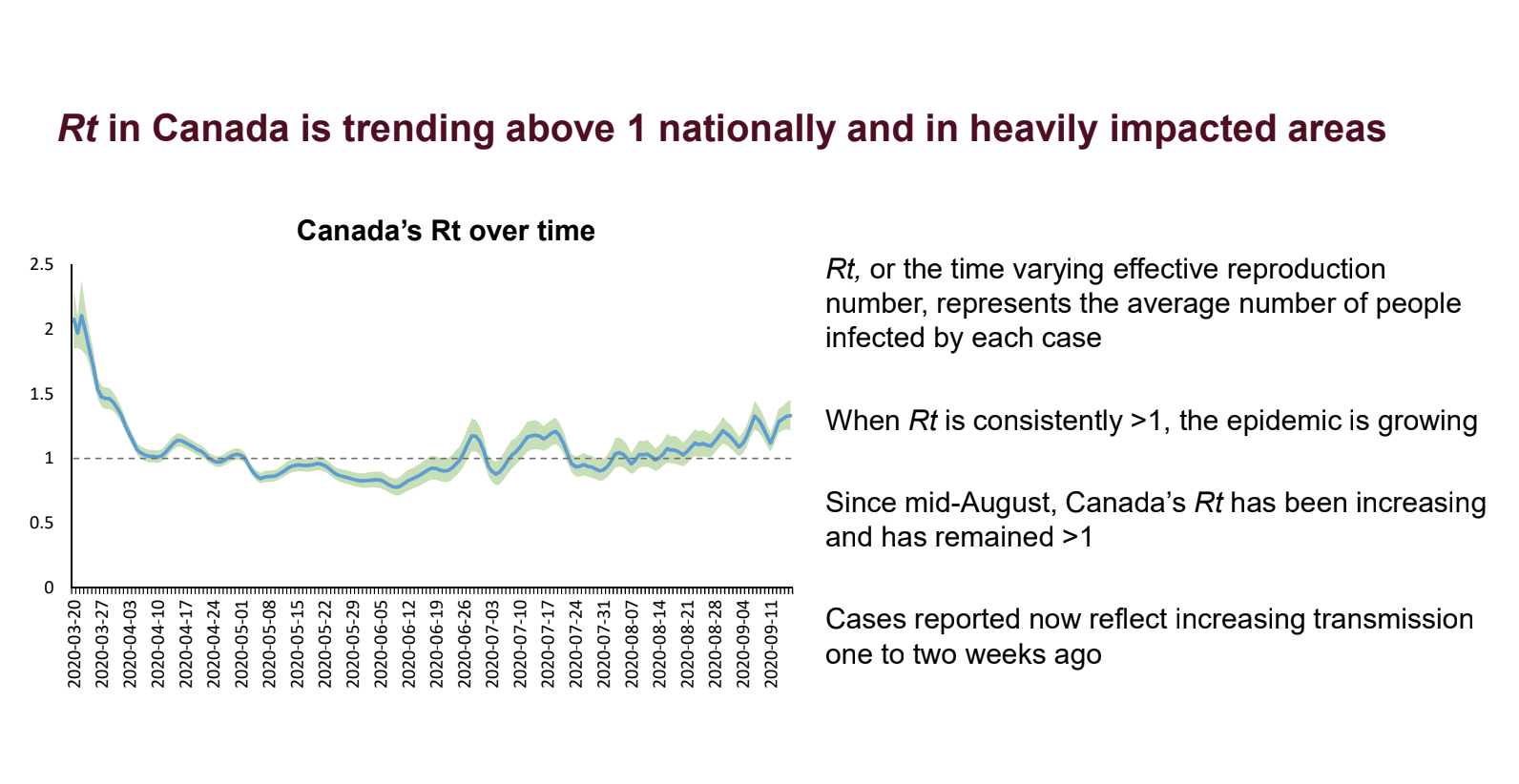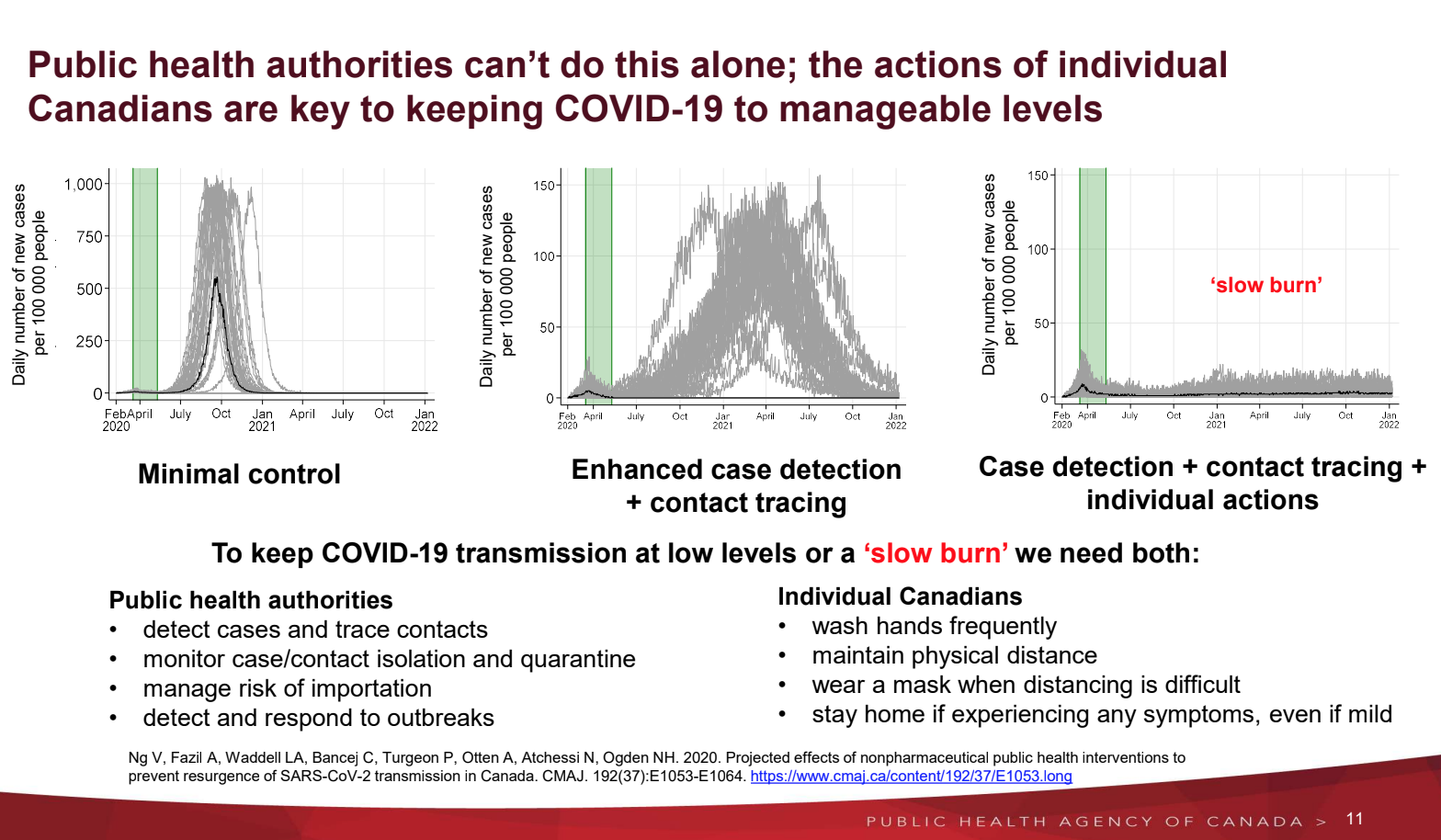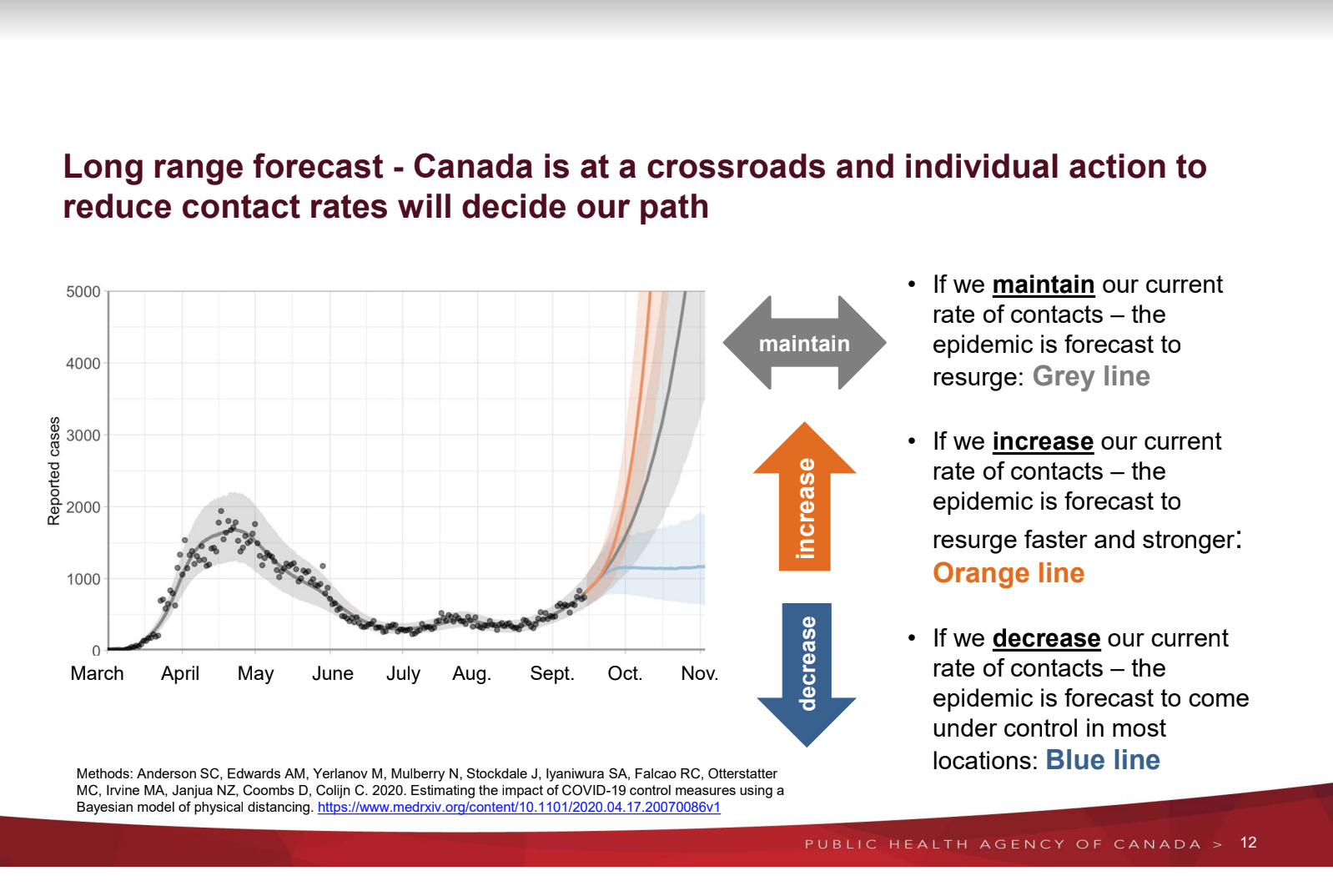The latest data and forecasted modelling from Health Canada and the Public Health Agency of Canada shows that the nation is currently on a troubling trajectory with the COVID-19 pandemic.
According to the Chief Public Health Officer of Canada, Dr. Theresa Tam, all provinces west of the Atlantic region have been showing an increase in the number of daily cases reported over the past few weeks.
Moreover, as of September 16, the reproductive rate of the virus, or Rt, was higher than where it needs to be in order to flatten the curve.
“In order for epidemic to die out, Rt needs to be less than one. When Rt is greater than one, this means the epidemic is growing. Right now, the Rt is around 1.4, which means that every 100 cases are passing the virus on to 140 people,” said Tam at a press briefing on Tuesday.

Much like in B.C., the resurgence in cases across Canada over the summer is attributed to younger demographics. As cases started to decline among seniors who were disproportionately affected in the first wave of the pandemic, more people in their 20s and 30s began to get infected starting in June.
Further, COVID-19 outbreaks are now being reported in a larger variety of settings than in health care settings, and outbreaks at long term care facilities have been far fewer in recent months with a significant decrease in the number of cases associated with each outbreak.
To be precise, the number of cases per long term care facility outbreak declined from over 30 cases per outbreak in April to less than five in August.
The restart of K-12 schooling has also not been a cause of the significant spike in cases recently, as school outbreaks so far tend to be limited to a single reported case or a small cluster with a few cases.
Hospitalizations and deaths related to COVID-19 remain low which could be a result of younger people, who tend to contract a milder version of the illness, driving the spike in cases.
However Tam says both are lagging indicators, meaning they tend to increase several weeks after a spike in cases.
There are already signs that hospitalization rates are starting to increase in some parts of the country. In B.C., for example, there are currently 60 people hospitalized with COVID-19, compared to 16 people in hospital at the start of July.

Modelling data shows that the virus is capable of surging into a very sharp and intense peak with minimal controls; with enhanced case detection and contact tracing but no individual hygiene measures and physical distancing, the peak will still be extreme but less sharp.
“The only way to achieve strong control of COVID-19 and prevent the virus from surging into uncontrollable levels is for public health and the public to work together,” added Tam.
Perhaps the most concerning part of the presentation is the slide that shows projections for the virus’ trajectory based on the level of individual contacts Canadians have.
If Canadians increase the number of contacts they have per person, the pandemic is forecast to surge to 5,000 new cases per day by early October.
However if Canadians maintain the number of contacts they are currently having, modelling shows that there will be 5,000 new cases per day by the end of October 2020.
The only way to bring the pandemic under control is to reduce the number of contacts people are having.

A similar dynamic modelling released in B.C. in mid-August showed that if the province continued with the existing number of contacts per person, the pandemic would surge to over 100 cases per day by September—a prediction that has since come true.
According to Tam, most European countries whose pandemic began sooner than Canada are also experiencing a surge in cases driven by younger populations. Authorities in Canada are watching and learning from those countries.
“Some countries have had cases spill over into older age groups and some countries like Spain have begun to see an increase in mortality rates,” said Tam.
In closing, Tam issued a call to young adults in Canada:
“We need your ingenuity and your drive because we won’t get COVID-19 back on the slow burn track without your help,” she said.
“This is your generation, this is your time. You’ve got this. Let’s work together and own this pandemic.”



